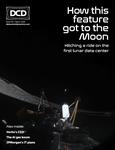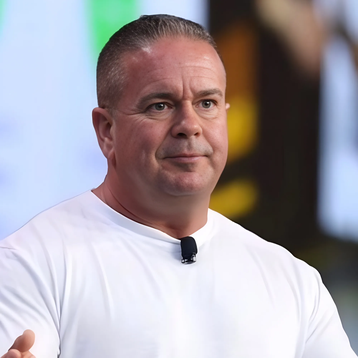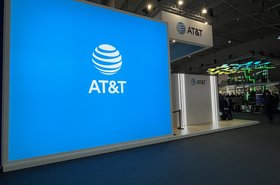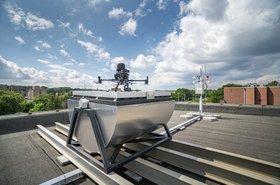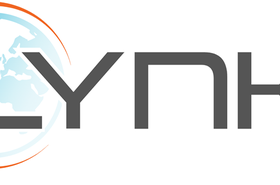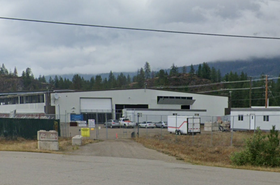Texas has become one of the epicenters of the AI data center boom.
Already home to Tesla’s 50,000-GPU supercomputer, Cortex, it will soon host the first stage of OpenAI’s ambitious Stargate project, which will see an initial $100 billion poured into AI infrastructure. Myriad other data center developments are in the works as the hyperscalers look to take advantage of the plentiful space - and power - on offer in the Lone Star State.
But as unprecedented amounts of data are set to whizz to and from Texas data centers at speeds of hundreds of gigabits per second, the contrast with the connectivity woes experienced by many residents of the state, particularly those in rural communities, could hardly be more stark. According to the most recent US census data, some 7 million people in Texas lack broadband access, while poor connections hamper the ability of government agencies to deliver basic services.
In a letter to residents highlighting the issue, Texas Comptroller Glenn Hegar, the senator who oversees the state’s accounts, said: “Twenty-three percent of Texans are unable to attend online classes, see a healthcare provider from their living room, fill out a job application online, start a business or access online marketplaces from their kitchen table. These barriers negatively affect Texans’ quality of life and limit economic opportunities for people and the state overall.”
The struggle for connectivity extends to school classrooms in many parts of Texas, where slow and unreliable networks often mean pupils are being denied access to valuable resources that are available to their peers elsewhere in the US. Now, a new company, Duos Edge AI, wants to close this digital divide with a network of Edge data centers, which it believes can be transformational.
Getting Duos Edge AI on track
Duos Edge AI is a subsidiary of Duos Technologies, a business that has traditionally been as concerned with shunters as it has with servers.
Founded in 2001 and based in Jacksonville, Florida, Duos Technologies uses machine vision-based solutions to automate inspections of trains and trucks while in motion. What this means in practice is that a train passes through an examination portal, which is equipped with multiple cameras that take pictures of each individual wagon. The company’s software then brings all these images together to conduct an automated remote inspection, flagging up mechanical problems that may need addressing.
As part of this work, Duos had already deployed Edge data centers adjacent to its scanners on railroads across the US, through a partnership with rail operator Amtrak. The pods apparently enable data to be captured from trains traveling at speeds of up to 125 miles per hour, and deliver safety information about these trains within 60 seconds.
The company spotted an opportunity to sell these data centers to third parties, but to do that, they needed someone who knew the Edge computing business. So they teamed up with Doug Recker.
The avuncular Recker had previously built and sold two data center businesses. He launched Colo5 in 2008, setting up two large-scale data centers in Jacksonville and Lakeland, Florida. After flogging this business to Cologix in September 2014, Recker resurfaced in 2017 at the helm of EdgePresence, which rolled out 100kW Edge data centers, housed in 12ft by 30ft containers, across the US.
EdgePresence quickly made its mark, supporting telecoms infrastructure firm American Tower in its Edge computing program and drawing a $30 million investment from DataBank. It wasn’t long before larger suitors came calling, and in April 2023 Ubiquity acquired the company for an undisclosed sum.
Recker stayed on at Ubiquity for a few months to aid the transition, but was soon looking to build a new Edge business. While his experience in the data center industry was undoubtedly vital to his decision to join Duos Edge AI, he says the time he spent abroad while between jobs was the biggest influence on his current career trajectory.
With a non-compete clause preventing him from joining another data center company after he left Cologix in 2014, Recker headed to Africa, where he worked with an NGO, Matter, in Zimbabwe and other countries, deploying its Innovation Hub Pods. These are air-conditioned classrooms housed in converted shipping containers that use solar energy to provide power and connectivity, enabling children to access a computing curriculum and other forms of online learning.
“We’d drop these pods in and have 15 kids sitting around tables and learning,” says Recker, who is Duos Edge AI's president. “These kids were like sponges, they would absorb everything, and even though they had never used a computer before, they would be coding within two days. That experience gave me the drive to do what I’m doing now - children need opportunities to learn, and we have similar problems here in our backyard.
“If I ever make it big, I’ll be going back there to support those guys because they do a lot of great work and I learned a lot.”
Problems in US schools may be slightly different from those experienced by pupils in developing nations, but Recker says they can be just as disruptive. “I’ve been to rural schools here where I can’t even get any phone signal, or the network is down so they can’t access the normal curriculum and are sharing books,” he says. “It’s not fair to those children because they’re not getting the same education as kids in a major city.”
The poor connectivity in rural America was highlighted in the Covid-19 pandemic, Recker says. With classes being held online, even pupils who had reliable broadband or wireless Internet connections at home were unable to access platforms such as Google Classroom because they were hosted on school district servers in the nearest big city. And given the sheer size of states such as Texas, the nearest settlement is often pretty far away.
“During the pandemic, the kids found they couldn’t get onto the servers because they were down or overloaded,” Recker says. “In District 16 in Amarillo, Texas, where we first deployed, you had more than 50 schools linking back to a data center in Dallas, 500 miles away. Connectivity was terrible for them.”
Show me the way to Amarillo
This is where the Duos Edge AI solution comes in. Launched in June 2024, the company’s Edge data centers contain 15 cabinets housed in a 55ft by 13ft (13m by 4m) pod. These can be set up on municipal land and connect to the area’s schools, providing much faster access to online services.
Referring to the company’s first project, in Amarillo, Recker explains: “We took a small piece of the School District central office’s parking lot and dropped the pod in. We then partnered with a big company called FiberLight, which had been given a grant to build fiber connections to the school district, and brought in multiple carriers to that pod.
“Now you have all the schools connecting back to the hub. The longest distance is 9 miles, rather than 500.”
The fiber connection into the pod allows it to service multiple carriers, Recker says, offering more choice for end users. “Before this, AT&T was the only player in town, so if its network went down, the whole city was down,” he says. “Now we have a minimum of four carriers in the box, which brings additional resilience and competitiveness to the market.”
Cabinets within the pod are currently low-density, Recker explains, due to the nature of the applications they run. “These are learning platforms that don’t require a lot of power,” he says. “The average we’re seeing is 5-6kW per cabinet, but the pod has the potential to go up to 300kW at 15 cabinets, we would just need to switch the cooling system out because at the moment it’s DX with hot and cold aisle containment. If we switched that out for a chiller, we could go to a higher density, but we don’t see the need for that with this application.”
This low density means that, unlike developers of larger data centers, Duos Edge is not engaged in a quest to find more power. “We’re putting our pods at hubs for the education districts, which are where everyone who is part of the education sector but isn’t connected to a school comes to work,” Recker says. “These are often housed in old grocery stores or warehouses, so what we’re finding is that they already have plenty of power to them, and I only want to take 300kW off there. It’s nothing.”
Duos Edge AI’s pods are manufactured by a company Recker has worked with in his previous data center companies. Made with a steel frame, he says they are capable of handling cabinets weighing up to 10,000lbs, and can withstand wind speeds of up to 160 mph. Getting the pods up and running takes three months, from signing the contract to installation, Recker adds.
The system appears popular in Amarillo. Speaking last year when the pod was launched, Michael Keough, Region 16’s CTO, said: "Introducing Edge data centers in our area is a critical step in ensuring that our students have the resources and connectivity they need to succeed. In such a rural area, this solution serves as a vital catalyst for digital equity, ensuring that our schools and communities remain competitive both within Texas and across the nation."
Recker says this popularity extends beyond the education sector. “What we thought was going to happen was that the 15 cabinets would just be focused on the schools,” he says. “But we’ve had clinics and the local hospital calling us for space, as well as the city government, the fire and police services, and the local university. It’s like we’ve built a major data center there, it’s just they’ve spent $1 million on it rather than $30 million.”
The future is farming
Duos intends to sell its Edge data centers to more school districts in Texas and, eventually, further afield. Recker is also looking to other, underserved, markets in rural areas.
“An area I think we’re going to see pick up in the next few months is farming,” he says. “Farmers are using drones and AI systems to monitor cattle and crops, looking out for signs of disease or predators. All that data that they gather has to go and be computed somewhere, so they can connect back into our box and enjoy a high level of connectivity to a hub that’s only a few miles away. I had no idea that Amarillo was one of the largest cattle-producing regions, we’re learning about these markets as we go, which has been really cool.”
All this means Recker has plenty to keep him occupied. He has staffed Duos Edge AI with some people he has worked with in his previous ventures, but says being part of the wider Duos operation has brought big benefits too.
“In my career so far I’ve gone out and raised some money, built a business then sold it four or five years later,” he says. “What I learned when I started looking at this opportunity was that I needed help to install these pods, particularly at scale. Duos was actually a colo tenant of mine at Colo5, so I’ve known about them for a while, and they’ve got a ton of smart people who have experience in installing these huts, which are like mini data centers, along railway lines.
“They have all the knowledge we need when it comes to deploying the pods and getting things like permits in place. We’re a separate subsidiary of the ‘mothership,’ but we’re also able to call on some top talent when we need it, so it’s been a great fit.”


